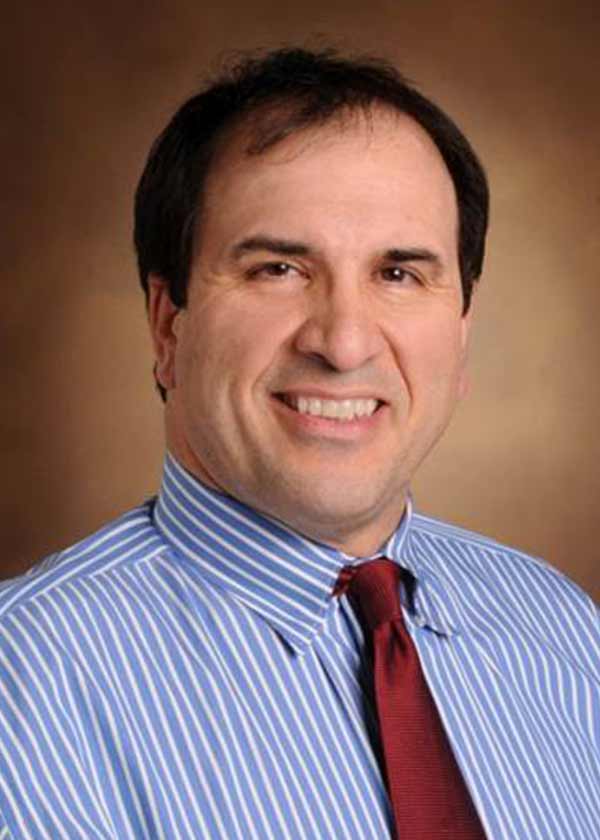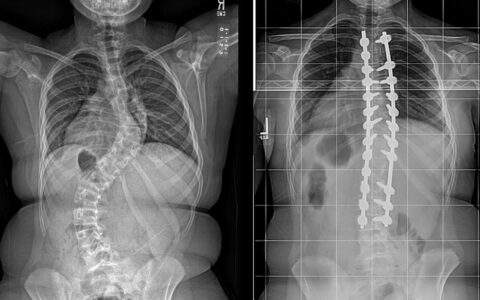Gregory Mencio, M.D., has been the Neil E. Green Professor and Vice Chair of pediatric orthopaedics at Monroe Carell Jr. Children’s Hospital at Vanderbilt since 2006. Named as chief of the division upon retirement of the late Professor Emeritus Neil E. Green, M.D. Building on Green’s legacy, Mencio has broadened Vanderbilt’s national reputation in pediatric orthopaedics.
He recently concluded service on the American Board of Orthopaedic Surgery, performing as board president his seventh and final year. He previously led the Pediatric Orthopaedic Society of North America (POSNA).
The professor spoke with Discoveries in Medicine at Vanderbilt about his observations on the state of advanced orthopaedics today and what he sees as its most important challenges and accomplishments.
Fracture Care Advances
Discoveries: From your perch, both at Monroe Carell and as a leader in national organizations, you’ve seen some dramatic advances in pediatric orthopaedic conditions. Which have been most impactful?
Mencio: Most of the work in orthopaedics is incremental in nature. One of our biggest accomplishments has simply been in the management of fractures in children.
“The concept of operating on fractures has changed the way we, as orthopaedic surgeons, care for pediatric patients.”
The concept of operating on fractures, while initially controversial, has been widely adopted over the last 30 years, and has changed the way we as orthopaedic surgeons care for pediatric patients with femur, forearm and other common fractures.
By stabilizing fractures with rods and plates we have been able to set children free from traction, casting and other constraints that were the standard treatment 20 or 30 years ago. And by enabling early mobilization after fracture healing, we are able to prevent stiffness, minimize muscle atrophy, promote faster return to normal activities for patients, and lessen the burden of care on parents and caregivers.
Discoveries: What made the switch from casting to surgical fixation possible?
Mencio: It was a matter of applying some of the principles of fracture treatment in adults, understanding the unique properties of the growing skeleton, and then improvising with smaller implants. In some cases, we use slightly different surgical approaches to account for smaller-caliber bones and the presence of important structures like the growth plates.
Improved intraoperative imaging and surgical instrumentation have enabled us to work through much smaller incisions, which translates into less post-operative pain, shorter hospitalizations and faster recovery.
Strides in Leg-lengthening
Discoveries: How has treatment of children with leg-length discrepancies changed?
Mencio: Historically, these children could only undergo correction with cumbersome external fixation devices. While these were effective, they were attached to bone using pins or wires that went thru the skin and muscle.
The successes in treating femur fractures in children with rigid rods inspired the development of similar implants for the purpose of lengthening the bone internally. In this technique, rods are inserted down the center of the bone, the bone is cut, and the rods are controlled magnetically from the exterior so that the leg can be lengthened in increments of 1mm per day. These children are free to go on with most of their normal activities. What a difference that made!
Improvements Through Teamwork
Discoveries: What are some of the recent impactful discoveries and advances emerging from Monroe Carell?
Mencio: Vanderbilt has played a significant role in the work to improve scoliosis outcomes in children, and has shown that earlier intervention generally leads to better outcomes. We also helped spur on a resurgence of the anterior approach to surgical repair and applied new surgical techniques for early-onset scoliosis that have changed the prospects for our youngest patients.
In sports medicine, research on ACL tears has changed the way we treat injuries to mitigate the risk of second surgeries, and treat repairs in a growth-sensitive way. We have also been leaders in designing a model for best practices and programs for safety in youth sports.
For clinicians who see suspicious traumatic injuries in our young patients, we have developed guidelines for what to look for and what to do to help ensure the child is safe. With the high number of seat belt injuries from car accidents, we have also developed scoring systems to better identify intra-abdominal injuries that may not be obvious.
Discoveries: How does Monroe Carell collaborate with other major centers in developing new treatments?
Mencio: Our faculty are active members in the Scoliosis Research Society, POSNA, and PRiSM (Pediatric Research in Sports Medicine Society), as well as study groups like the Pediatric Spine Study Group and CORTICES (Children’s ORthopaedic Trauma and Infection Consortium for Evidence-Based Studies).
These organizations not only assure that individuals meet standards of excellence, but they truly promote collaboration among members to connect the dots between the work of the major research centers in developing new treatments for children with both common and more esoteric orthopaedic problems.






